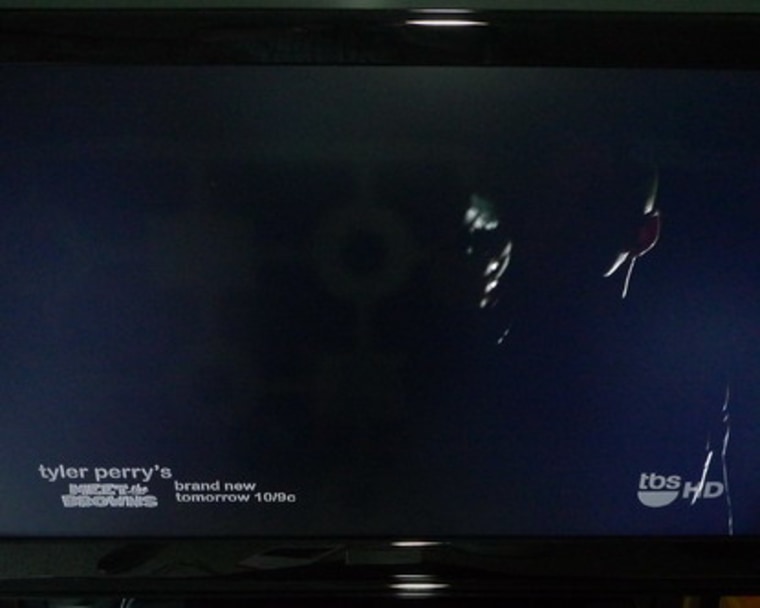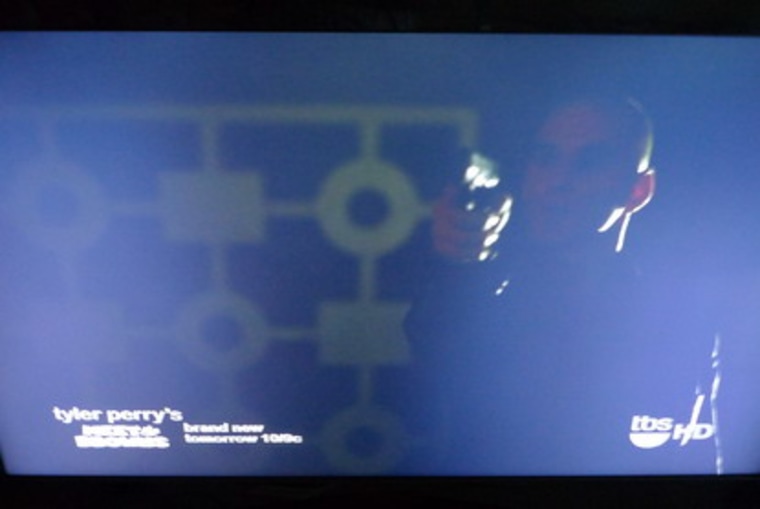It may be difficult to believe, but just a decade ago TVs based on cathode-ray tubes (CRTs) were the biggest sellers. CRTs have excellent viewing angles, outstanding black levels and high contrast ratios. The technology’s Achilles' heel (aside from sheer bulk) was a lack of brightness compared to today’s flat screen sets. However, for most indoor viewing environments, the light output was adequate.

Not surprisingly, store lighting in the TV departments of major retailers such as Best Buy and Circuit City a decade ago was subdued to better emulate home ambient lighting conditions so the sets wouldn’t look dim and washed out.
That’s hardly the case today, with store lighting levels purposely cranked up as much as 50 times typical home lighting conditions. Why the change? Because these intense levels can make the best displays with the blackest black levels and highest contrast levels look inferior to cheaper, lower performance displays. Not surprisingly, this leads consumers into buying the cheaper sets because they think they’re getting as good a set, if not a better one, for less.
Contrast, Brightness and Resolution
A TV’s native resolution, black level and brightness (called white level) controls its perceived image sharpness. Resolution of almost all HDTVs falls into two categories, 720p and 1080p, so from a static resolution standpoint, almost all large-screen TVs today are about the same (either 720p or 1080p).
“Contrast ratio,” for example 1000:1 (or 1000 to 1) indicates how many times greater is the highest intensity white signal than the lowest intensity black one (the number 1 is the black signal). While that gives you a ratio it tells you neither how bright are the whites, nor how dark are the blacks.
Here is where stores utilize intense lighting to manipulate your judgment. In a typical home environment, the set that will appear to have a better picture and be seen as sharper will be the one with the blackest blacks and reasonably white whites (around 30 ft lamberts) rather than one that’s similarly bright but with lighter black levels.
Viewers perceive just the opposite in a high ambient light showroom. Invariably they choose the set with the brightest picture as having the clearest image, even if the set has poor black levels because the bright ambient lighting masks poor black level performance.
The Measurement Methodology
Last month, using a Konica Minolta T-10 illuminance meter, HD Guru measured the amount of ambient light in the TV sections of national retail stores and warehouse clubs around Long Island (Sears, Best Buy, Target, Walmart, Costco and BJ’s).
The measurement total depended upon the set quantity at each retailer; the more sets on display, the more measurements taken. See below for average reading per retailer. Daytime measurements in homeowners’ bedrooms, dens and living rooms also published below were taken with window shades and room lighting adjusted by the homeowners to their particular preferences. Not measured were kitchens, which tend to be far brighter than other rooms and where viewing time is limited and their smaller dimensions usually mean smaller screen sizes.
Store and Home Readings
Store averages (measured in lux) were: Walmart 411.66, Costco 742.77, Target 371.38, Best Buy 180.3, BJ’s 412.13, and Sears 236.58. By comparison, ambient light levels measured in 10 rooms of various homes ranged from just 1.2 to 110.1 lux, with all but two rooms reading less than 35 lux.
Why Do Stores Crank Up The Brightness?
Today, there are two basic retail categories: aided stores with salespeople, such as Best Buy and Sears, and unaided (self-service) ones such as BJ’s, Costco, Target and Walmart. Price generally drives consumer purchases in unaided, brightly lit stores where the lower priced, poorer performing sets can appear to be as good as, or better than, the more expensive sets. Get the set home and with no reference point, you’ll end up assuming you’re getting the level of performance observed in the store.
Management directs aided store salespeople to maximize profits. While there’s nothing inherently wrong with that, it does conflict with making the right HDTV choice. How? Let’s assume you have a budget of $1,500. HDTVs pricing is very competitive and store margins are low. Stores maximize profits by convincing you that a $1,000 TV looks as good, if not better, than the $1,500 set placed next to it. That leaves you with $500 to buy high-profit-margin items such as service contracts, “high speed” HDMI cables and power conditioners, when a perfectly adequate HDMI cable can be had online for under $10 and a relatively inexpensive surge protector is all you really need. Read this before buying a service contract: (link).
Vizio TVs offer retailers lower profit margins compared to other brands, according to industry sources. Not surprisingly, with the exception of Sears, which is an aided store, Vizio’s retailers are unaided stores, where high lighting levels and Vizio’s low prices allow it to compete with and beat Sony and other established brands to win top sales positions.
The MHT Exception
Best Buy’s Magnolia Home Theater division (MHT), located within many Best Buy locations, sells the best and most expensive HDTVs, including top-of-the-line plasmas and LED backlit LCD flat panels not found on the main showroom floor. To demonstrate the best displays’ rich inky blacks, guess what MHT does? Correct! They match the store’s lighting to about the same levels found in a typical home environment. Measurements taken at our local Best Buy’s MHT measured from 24.4 to 49.2 lux with an average level of just 34.7 lux! Yes, Magnolia understands that for its customers to see and appreciate the deep blacks, high contrast ratios and superior image quality produced by the more expensive sets it sells, it needs to duplicate home light levels.
Tips
Setting optimal black level for a given display requires adjusting user controls via the TVs remote control, with ambient lighting set to levels similar to what’s found in your home and specialized test signals.
Unfortunately, these conditions are not possible in the big box retailers and warehouse clubs listed above, so you’re stuck with the store’s showroom mode settings. However, you can get a relative idea of the black level of a given display regardless of the stores' high ambient light levels by using this trick. Cup your hands forming a tunnel with your thumbs and index fingers making the front opening. Place the pinky side of your cupped hands against the TV screen and place your eye against the front opening. You will need to find a black area of the picture or, if you’re lucky, black bars will be present at the top and bottom of the screen on a letterboxed demo material. This will give you an idea of just how light the blacks are on different displays.
Contrast Ratios Specs Are Useless
No accepted TV industry standard exists for measuring contrast ratios. Numbers provided by manufacturers are meaningless. The fake spec race is getting worse, with many vendors now providing two contrast ratio specs, standard and dynamic. “Standard” is with white and black areas on the screen at the same time. “Dynamic contrast” is measured using a black screen with no content, versus brightness with a white area on the screen, resulting in a useless number. Who cares how dark a blank screen looks? HD Guru continues to get stonewalled when we query set makers for the methodology of their respective published contrast ratio numbers. The current record absurd claim is a published dynamic contrast ratio spec of 7,000,000 to 1. To add to the confusion, there is a natural maximum eye contrast resolution of just 300:1, according to a paper published by Siemens Technology (PDF link) (http://www.eizo.eu/html_76/ftp/bb_ensuring_image_quality.pdf.)
In an effort to rebut these published specs, HD Guru will be using a newly acquired Konica Minolta meter to make its own contrast ratio readings and will publish the results in all future HDTV reviews.
Have a question for the HD Guru?
HD GURU|
Copyright ©2009 HD Guru Inc. All rights reserved. HDGURU is a registered trademark. The content and photos within may not be distributed electronically or copied mechanically without specific written permission. The content within is based upon information provided to the editor, which is believed to be reliable. Data within is subject to change. HD GURU is not responsible for errors or omissions.
